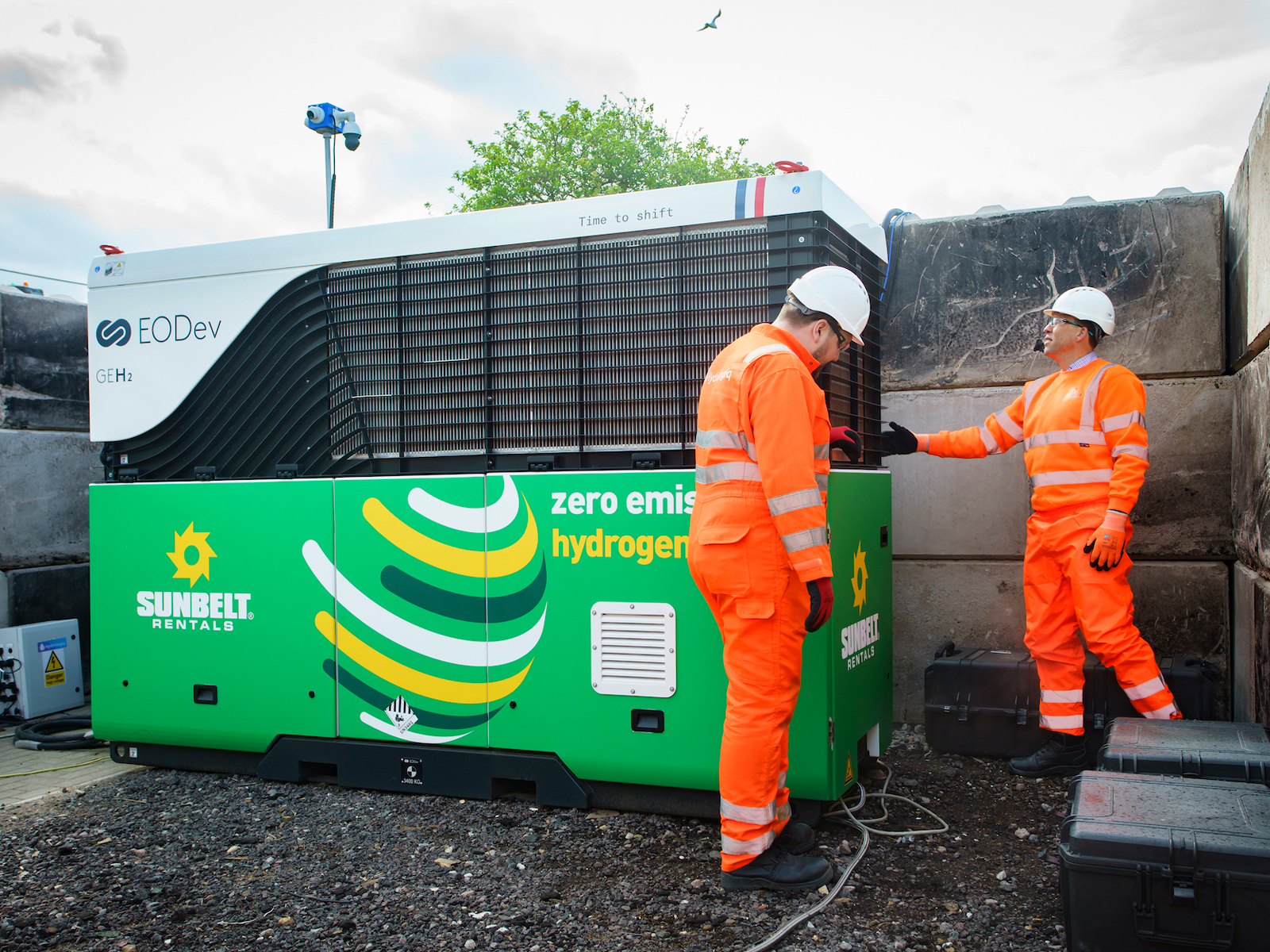
As part of the Canvey Island Southern Shoreline Revetment project, Sunbelt Rentals, Balfour Beatty and the Environment Agency have joined forces to conduct a hydrogen fuel-cell trial. This initiative highlights their commitment to their sustainability strategy, Our Planet and supporting their customers in achieving their net-zero targets.
The Canvey Island project was designed to renew and improve three km of shoreline flood defences, protecting the local community against rising sea levels. From the very beginning, sustainability has been a key focus, with the team choosing eco-friendly technologies such as EcoSense welfare cabins, energy management systems, battery storage units, solar frames and rainwater harvesting systems.
Part of this project included the trial of a hydrogen powered fuel-cell generator, tested over four weeks. This pioneering approach marks a significant step towards creating a zero-carbon site and showcases hydrogen as a potential alternative for diesel for off-grid temporary power.
Shared vision for net-zero
The trial highlighted Sunbelt Rentals’ journey to bring together a team of experts within their H2 learning and development group, aimed at collaboratively testing and implementing hydrogen as a viable solution for zero emission sites. The hydrogen generator, supplied by Sunbelt Rentals in partnership with EODev and Hydrologiq, delivered 24/7 silent power throughout the duration of the test.
Over the course of the four-week trial, the entire site consumed 202.5 kg of green hydrogen, which produced 3,310 kWh of energy with an average generator efficiency of 49%. This resulted in a reduction of 4,256 kg of CO2 emissions, eliminating the direct scope 1 emissions associated with powering the compound.
George Woodiwiss, Sustainable Applications Manager said “Projects such as Canvey Island are a must for us to build our foundations, knowledge, and experience that we all need to succeed in creating a new landscape where hydrogen powered solutions start penetrating today’s current methods at scale. This trial demonstrates the power of a collaborative approach and desire to move forwards with emerging technologies that can make a difference to our planet and our future.”
Mehrnoosh Khan, Energy Graduate at Balfour Beatty, emphasised this by saying, “. Our long-term goal is to reach a point whereby it’s the first choice of fuel/energy, providing a zero-emission solution to powering all our projects.”
Challenges and innovation
Deploying hydrogen on-site presented its own challenges, including strict health and safety regulations, storage and transport logistics and higher costs when compared to diesel.
Additionally, the operational deployment of hydrogen requires a comprehensive safety framework, which includes updated health and safety rules, DSEAR assessments, compound design, and certifications around hydrogen sourcing, storage and refuelling.
These challenges are inevitable when pioneering new technology and through collaboration, the industry can effectively address and overcome these challenges to benefit our planet.
Aran Bates, CEO of Hydrologiq, stated: “As consensus grows that hydrogen plays a key role in removing diesel from construction sites, the key to its acceptance lies in seamless integration. We need collaboration across the entire supply chain, ensuring that the physical, digital, process and regulatory pieces all come together to unlock the true potential of this fuel source.”
The Canvey Island hydrogen trial demonstrates the potential the industry has when they work together to explore alternative fuels. With the learnings gained from this project, Sunbelt Rentals, Balfour Beatty and the Environment Agency are leading the way for wider hydrogen adoption across the UK, advancing our progress towards a zero-carbon future.












